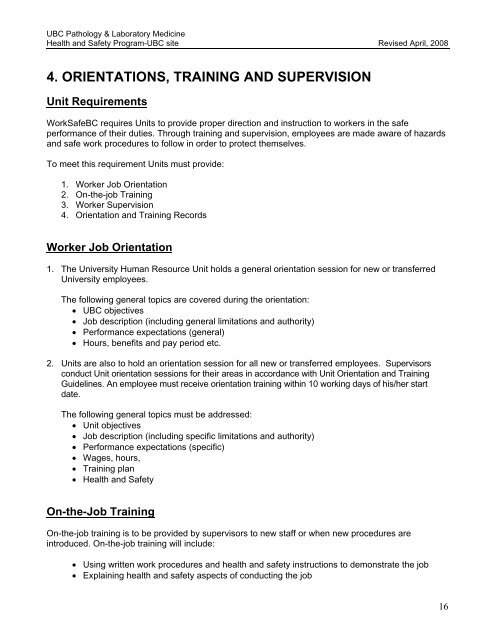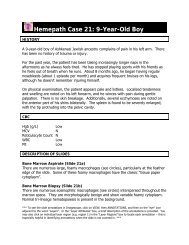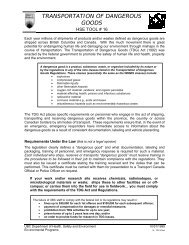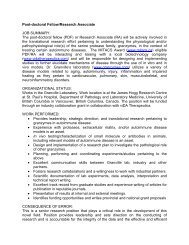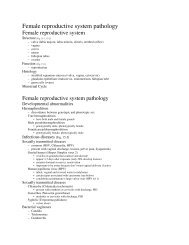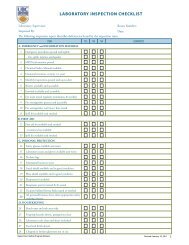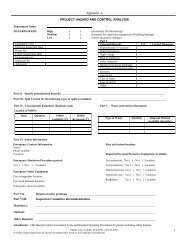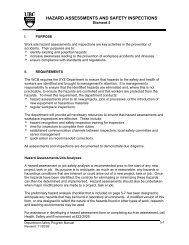your health and safety program manual - Pathology and Laboratory
your health and safety program manual - Pathology and Laboratory
your health and safety program manual - Pathology and Laboratory
You also want an ePaper? Increase the reach of your titles
YUMPU automatically turns print PDFs into web optimized ePapers that Google loves.
UBC <strong>Pathology</strong> & <strong>Laboratory</strong> MedicineHealth <strong>and</strong> Safety Program-UBC site Revised April, 20084. ORIENTATIONS, TRAINING AND SUPERVISIONUnit RequirementsWorkSafeBC requires Units to provide proper direction <strong>and</strong> instruction to workers in the safeperformance of their duties. Through training <strong>and</strong> supervision, employees are made aware of hazards<strong>and</strong> safe work procedures to follow in order to protect themselves.To meet this requirement Units must provide:1. Worker Job Orientation2. On-the-job Training3. Worker Supervision4. Orientation <strong>and</strong> Training RecordsWorker Job Orientation1. The University Human Resource Unit holds a general orientation session for new or transferredUniversity employees.The following general topics are covered during the orientation:• UBC objectives• Job description (including general limitations <strong>and</strong> authority)• Performance expectations (general)• Hours, benefits <strong>and</strong> pay period etc.2. Units are also to hold an orientation session for all new or transferred employees. Supervisorsconduct Unit orientation sessions for their areas in accordance with Unit Orientation <strong>and</strong> TrainingGuidelines. An employee must receive orientation training within 10 working days of his/her startdate.The following general topics must be addressed:• Unit objectives• Job description (including specific limitations <strong>and</strong> authority)• Performance expectations (specific)• Wages, hours,• Training plan• Health <strong>and</strong> SafetyOn-the-Job TrainingOn-the-job training is to be provided by supervisors to new staff or when new procedures areintroduced. On-the-job training will include:• Using written work procedures <strong>and</strong> <strong>health</strong> <strong>and</strong> <strong>safety</strong> instructions to demonstrate the job• Explaining <strong>health</strong> <strong>and</strong> <strong>safety</strong> aspects of conducting the job16


